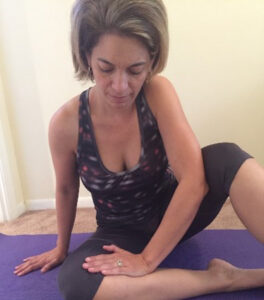Relief From Lower Back Pain
Author: Julie Donnelly, LMT –The Pain Relief Expert
Editor: Dr. Steve Chaney
 May was the start of the beautiful weather when I lived up in New York. April showers began to bring May flowers. Of course, here in Florida we have flowers all year, so it’s our friends to the north that are enjoying a glorious array of colors during this month. For us May is the beginning of the hot weather.
May was the start of the beautiful weather when I lived up in New York. April showers began to bring May flowers. Of course, here in Florida we have flowers all year, so it’s our friends to the north that are enjoying a glorious array of colors during this month. For us May is the beginning of the hot weather.
The Snowbirds are leaving Florida and heading back up north. Safe journey. I’ll miss you! It’s funny having friends that are gone 6 months of the year.
But it also means that life is beginning to slow down for us. With most of the snowbirds gone, driving is easier, the stores are less crowded, and we can park at the beach. The weather is still beautiful so we can still go outside to ride a bike, jog, or play the sports we enjoy. This leads me to talk about preventing lower back pain as we become more active.
The Anatomy of The Psoas And Iliacus Muscles
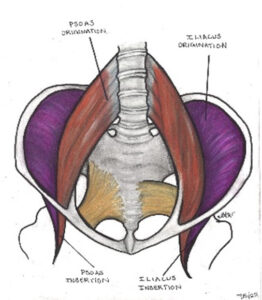 In this month’s newsletter we will be discussing the psoas and iliacus muscles and how they can contribute to lower back pain. Anyone who has come to my office with lower back pain, hip/groin/knee pain, or sciatica is familiar with these two muscles being the root cause of all these conditions.
In this month’s newsletter we will be discussing the psoas and iliacus muscles and how they can contribute to lower back pain. Anyone who has come to my office with lower back pain, hip/groin/knee pain, or sciatica is familiar with these two muscles being the root cause of all these conditions.
There is more to the story of each of these conditions, and I have covered them thoroughly in previous newsletters, and in each of my books. Today I want to really explain the “why” of how a muscle in the front of your body plays such havoc with the back of your body.
The psoas muscles (shown in brown in the figure on the left) originate on the FRONT side of the lumbar vertebrae and the iliacus muscles (shown in purple in the figure on the left) originate on the inside curve of your pelvis. They join very close to your pubic bone and become one muscle group called the iliopsoas muscle group, and they play a critical role in hip and core stability.
The iliopsoas muscle group runs together to where it attaches on the top/inside of your thigh bone.
The Role Of The Psoas And Iliacus Muscles
The psoas muscles pull you forward so you can bend over, and the iliacus muscles lift your legs up to take a step. Together they are responsible for flexing your hip joint, which is important for movements such as walking, running, climbing stairs, and sitting down.
Additionally, these muscles play a vital role in maintaining good posture and providing stability to the pelvis and lower back. In fact, the only time they are not contracted is when you are standing straight and still.
When these muscles are tight or weakened, they can cause significant problems, including:
*Low back pain.
*Groin pain.
*Hip pain.
*Knee pain.
*Sciatica.
How The Psoas And Iliacus Muscles Cause Lower Back Pain
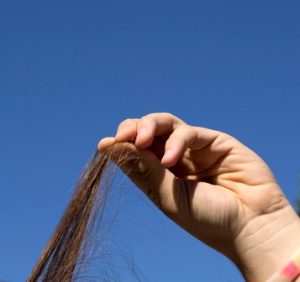 When the psoas muscle becomes tight from repetitive, or overactive, use it can pull on the lumbar spine. An analogy I use frequently is just as pulling your hair hard can hurt your skull, the psoas muscle pulling hard on the front of your lumbar spine will cause the bones to hurt.
When the psoas muscle becomes tight from repetitive, or overactive, use it can pull on the lumbar spine. An analogy I use frequently is just as pulling your hair hard can hurt your skull, the psoas muscle pulling hard on the front of your lumbar spine will cause the bones to hurt.
The pressure causes excessive curvature of the lower back. This excessive curvature can cause compression of the lumbar discs and joints, leading to pain and discomfort.
Since your iliacus muscle originates on the inside curve of your pelvis (hip), when it is tight it is common for a person to have hip pain that feels like it’s deep inside the hip. And it IS deep inside the hip, so much so that you can’t get your fingers in more than ¼ of an inch to press on the muscle. Fortunately, when you come into the office I can get far into the muscle and release the deep spasms that are causing the problems.
Additionally, since they merge and insert into your thigh bone, tight psoas and iliacus muscles can cause imbalances in the pelvis, leading to asymmetrical movement patterns that can contribute to lower back pain and a lot more!
Conversely, weak psoas and iliacus muscles can also cause lower back pain. When these muscles are weak, they are unable to provide adequate stability to the pelvis and lumbar spine, leading to excessive movement and strain on the lower back muscles. This strain can lead to muscle imbalances and compensations, which can ultimately cause lower back pain.
How The Psoas And Iliacus Muscles Can Cause Arthritis Symptoms
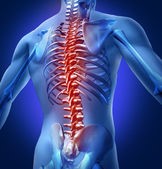 Think of this situation: the muscles are tight and pulling hard on the bones. You are trying to move in the opposite direction, but the muscles are preventing you from moving in that direction. The more you try, the more the bones hurt.
Think of this situation: the muscles are tight and pulling hard on the bones. You are trying to move in the opposite direction, but the muscles are preventing you from moving in that direction. The more you try, the more the bones hurt.
In fact, as the tight muscles pull on the bones, they can actually start to tear the muscles &/or tendons away from the bone. The body sees this as a “MAYDAY,” an emergency distress signal. The pressure on the bones causes inflammation to occur. You are also in danger of the muscle severing either from the tendon, or from the bone. So, the body sends out the rescue squad of bone cells to hang on to the tendon.
Now you have:
- pain when you try to move.
- inflammation (“itis”) at the site of the insertion.
- and the joint is stiff, possibly even pulled out of normal alignment.
- …you have all the signs of arthritis or bursitis.
You may be given strong drugs that can have serious side-effects, when all that’s wrong is the muscles are tight and preventing the bones/joints from moving smoothly.
Relief From Lower Back Pain Caused By Your Psoas And Iliacus Muscles
Don’t start by stretching! It can cause the problem to get worse!
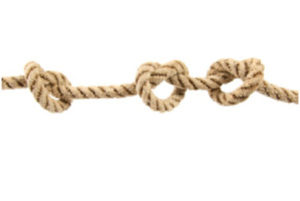 Everyone thinks about stretching, but when a muscle is tied up in knots, you definitely don’t want to try to stretch it. You can make it much worse, or you may even tear the fibers.
Everyone thinks about stretching, but when a muscle is tied up in knots, you definitely don’t want to try to stretch it. You can make it much worse, or you may even tear the fibers.
You may have already heard the analogy I use to explain why stretching can hurt your muscles.
If you took a 12” length of rope and tied enough knots in it to make it 10”, and then you stretched it back to 12” again, what did you do? You made the knots tighter, and you overstretched the fibers that are not in the knot. And in the body, both ends of this rope (muscle) are attached to a bone &/or a joint!
First you need to untie the knots — then you can stretch safely.
You can go on YouTube University and find lots of ways to stretch, but you’ll be hard-pressed to find anything that tells you how to untie the knots.
So, I’ll tell you.
How to Find the Knots in the Iliopsoas Muscle Group and Untie Them Safely
As I said before, you can’t really get into either the iliacus or psoas muscles that are deep in your trunk, but you can reach them where they insert into the inside of your thigh bone.
Turn your hand as shown but come all the way up to the top of your leg, right where your leg attaches to your trunk, just to the outside of your pubic bone.
You may even find it easier to press into the muscles with your fingertips, keeping your hand turned as shown in this picture.
When you find a “hot spot” you are pressing onto the spasm on the iliopsoas muscle group.
What To Do Next To Stop Back Pain Fast
I’ve discovered a LOT of ways to eliminate pain, and I’ve been doing it for my clients for almost 35 years. However, it was frustrating that I could only reach clients who lived near my office.
When I started getting my own injuries, and then I needed to create self-treatments when I couldn’t get help from any of the professionals I went to during that time. I finally worked it out, and that’s the basis for each of my books and video programs.
In the case of low back pain, hip/groin/knee pain, and sciatica, I suggest getting my book: The 15 Minute Back Pain Solution
You CAN find, and successfully self-treat the muscle spasms (knots) that cause pain!
Wishing you well,
Julie Donnelly
PS: Have you watched my TED talk: The Pain Question No One is Asking? If not, go to YouTube and enter: Julie Donnelly, Pain and I’ll pop up. I think it’s really interesting. If you also think it’s interesting, please share it so I’ll get invited back to go further into why muscles cause pain.
These statements have not been evaluated by the Food and Drug Administration. This information is not intended to diagnose, treat, cure or prevent any disease.
About The Author
Julie Donnelly has been a licensed massage therapist since 1989, specializing in the treatment of chronic pain and sports injuries. She is the author of several books including Treat Yourself to Pain-Free Living, The Pain-Free Athlete, and The 15 Minute Back Pain Solution. She is also often chosen to speak at national conventions, medical schools, and health facilities nationwide.
Julie has also developed a proven self-treatment program for the symptoms of carpal tunnel syndrome.

